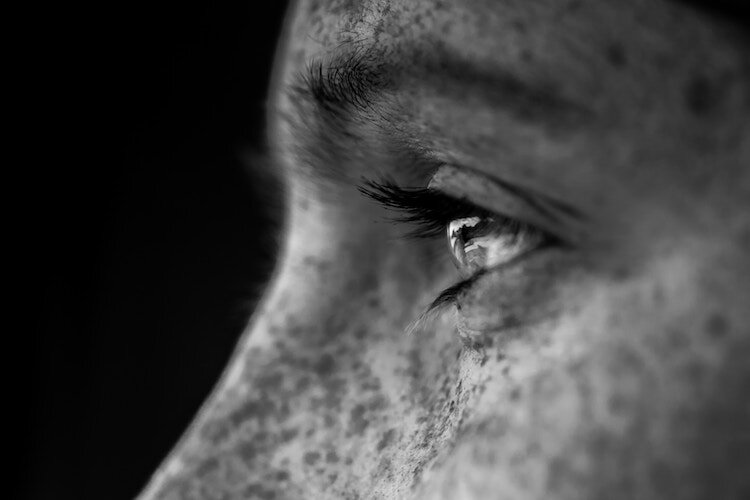The Case for Hope
We’ve all heard it said ‘Hope is not a strategy’. We couldn’t disagree more. At BIZU, we believe it’s actually the most important one.
It’s the age old question of motivation. What motivates you more? What produces more results – hope or fear? In a time when more and more businesses are struggling or closing down, leaders scramble to rally their organizations around ‘burning platforms’ and language like ‘change or die’ to put a fire underneath their people to change the course of their direction. But is this the best way to incite people to think and act differently?
When the chips are down, be they in sales or in our personal life, the idea of having to change because you’re afraid of the consequences of what might happen if you didn’t is powerful, but it breeds a closed mindset that conflicts and in extreme cases blocks growth.
Fear motivates by placing people in a state of uncertainty and dread, caused by the belief that someone or something is dangerous, and likely to cause pain. Obviously NOT ideal. Physiologically our bodies respond by tightening up and constricting as we go into fight or flight mode – ready to make a quick decision. Sure, when you’re next in the jungle facing a lion, fear is an intense motivator that finds you climbing a tree when you’ve never done so – a life saver. But when was the last time one of us was in the jungle facing a lion? What we end up facing is a constant state of anxiety and chronic stress in our bodies – a kind of imprisonment – a looming threat that maybe the business will not survive, or cuts are coming.
The problem is once our fear pathways are ramped up, the brain short circuits more rational decision making and perceives everything as negative. Cortisol, dubbed the ‘stress hormone’, streams through your system all day long, making excess amounts dangerous leading to a host of health problems from weight gain to heart disease. Chronic stress leaves you feeling wired and tired and takes an equally high toll on your brain. And here’s the kicker, stress brought on by fear halts production of new brain cells. Under this circumstance, it’s not likely that you’d want to try something new, in fact the likelihood is high that with fear as their motivator, people will default to what’s worked in the past just to be safe.
Hope on the other hand has positive physiological and psychological effects on us humans. Where fear causes tightening, hope relaxes. Where fear defaults to the past, hope looks to the future. If we imagine the brain as a house with many doors, hope opens the doors to possibilities where fear closes them. Hope nurtures imagination and allows us to see things unseen. The body in a state of hope not only can handle pain better, but it can accelerate healing and recovery. Hope is the birthplace of belief and expectation. Hope shifts the brain to a state where serotonin, dopamine, oxytocin and endorphin are released, which are critical in building our happiness quotient.
Dopamine is the ‘feel good’ hormone that keeps you motivated, oxytocin is the ‘bonding’ hormone that helps you create relationships with people around you, serotonin is the ‘feel important’ hormone that makes you feel good about yourself and others and endorphin helps us overcome stress and pain. Together these hormones form a powerful elixir that allows us to do more, achieve more and be more. A body and mind in a state of hope is more open to taking on new challenges, it’s more creative and able to see things as opportunities instead of obstacles.
Unfortunately hope isn’t language that you hear in the world of business very often, but I would suggest that this is one of the reasons why we’re seeing long standing organizations in a state of demise.
We forget that organizations are made up of people, and a culture of fear effects people on mass. Change is inevitable, it’s part of our life and the need for change won’t go away. The question is why wouldn’t an organization that needs to change, springboard from a platform of hope to tap its’ employee’s potential, rather than put them into a state of fear and negativity that will ultimately block their creativity and stunt their imagination. Isn’t it precisely at this point of needing to change that you would want people believing that anything is possible, and they can make a difference? Ultimately change itself isn’t the problem. Fear is. And hope is the answer.
Before you deliver your next state of the union address to your team or create your strategic change plan, check to see if it’s filled with HOPE. Think of Hope as an acronym, Honest Optimism delivered with Perspective and Empathy.
Honest: That means truth … tell the truth, authentically. There’s nothing worse than a leader skating around an issue. We’re done with political platforms that bend the truth to serve their purposes. If the business decision didn’t work, say that. Truth is the beginning of change. As the ancient saying goes, ‘the truth will set you free’. And when you’re free, you have room to grow.
Optimism: Glass half full or half empty? By definition optimism is the feeling of being hopeful about the future or about the success of something in particular. But it’s not a feeling that you stumble into or that lands on you by chance. Nor is it an empty-headed, Polly-Anna refusal to see unpleasantness or hardship. Optimism is an open-eyed act of will. It’s a radical, conscious decision to think and believe the best about people in order to see the best in people.
Perspective: From what vantage point are you viewing your situation? If your customer looked at your problem what would they see? What solution might they give? What about your employees, competitors, friends? How about children? Perspective has the courage to look at life from different angles which opens your eyes to see the world in a new way and that’s the birthplace of new ideas.
Empathy: Growth doesn’t happen without some form of risk taking. At some point you have to take the jump into the unknown of doing things differently than you’re used to and it’s not easy. Everything in you wants to go back to the way things were; yes you were stuck, but at least you were in control. Empathy is needed to understand where people are at and how to help them navigate the hurdles, setbacks and challenges ahead of them. As Theodore Roosevelt said, “people won’t care how much you know, until they know how much you care.”
So the next time you’re looking to motivate your team to make a change or to follow your vision, remember to fill your strategy with HOPE. Ask yourself, does it feel authentically honest? Is it optimistic – does it build up or tear down? What perspective are you sharing for the issue and the solutions to help people come alongside you? Does it show empathy for how people are feeling and where they’re at?
Without hope, people will not only tune you out, they will close down in fear. Hope helps to shift people’s mindsets from the limitations of what was or is, to the possibilities of what can be, and that’s where change can really begin.
Feeling hopeful? BIZU builds brands that matter. Let us help build your brand. www.bizu.co
Ref:
1) https://bebrainfit.com/effects-chronic-stress-brain/2) https://www.quora.com/Whats-the-difference-between-dopamine-serotonin-oxytocin-and-endorphins






